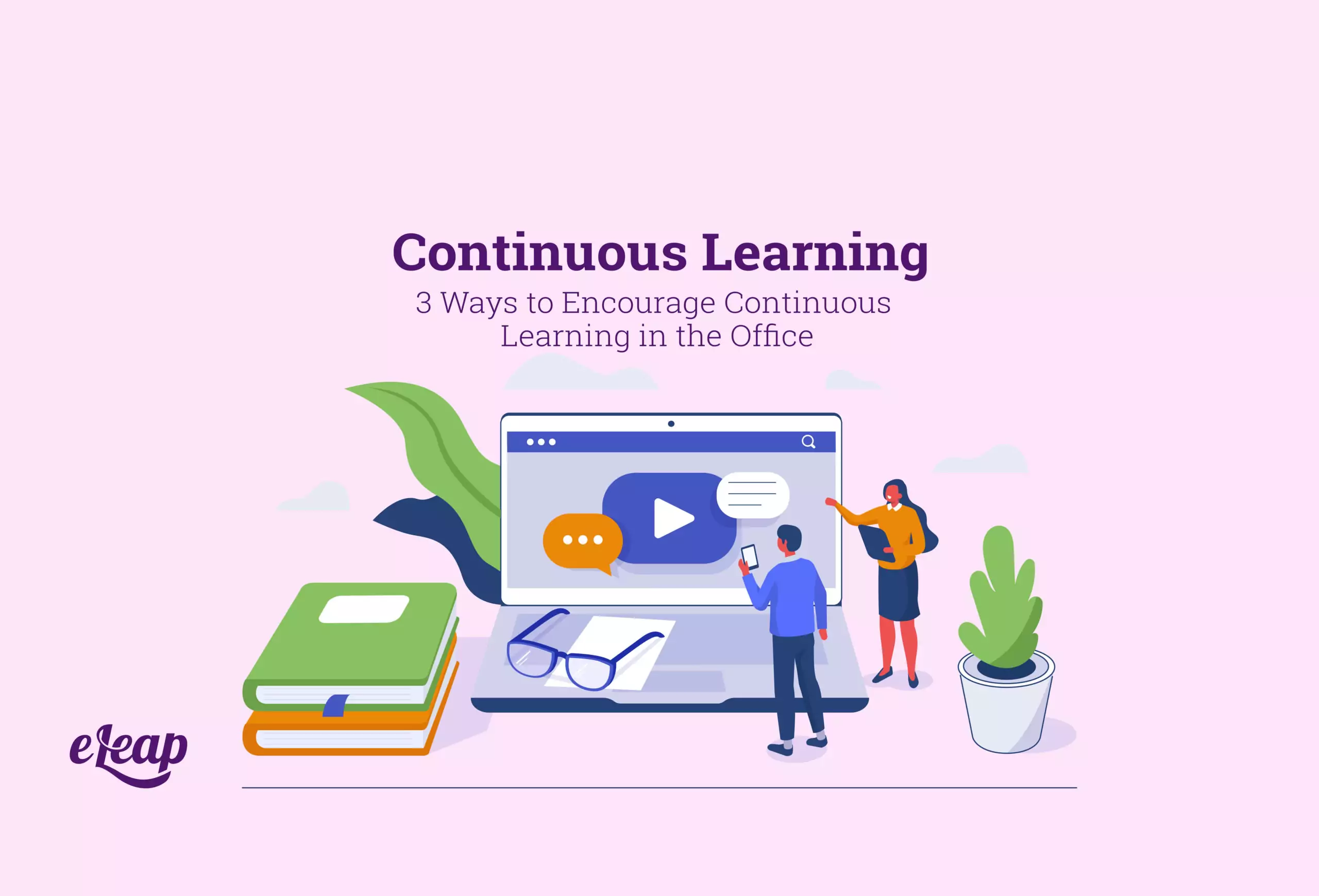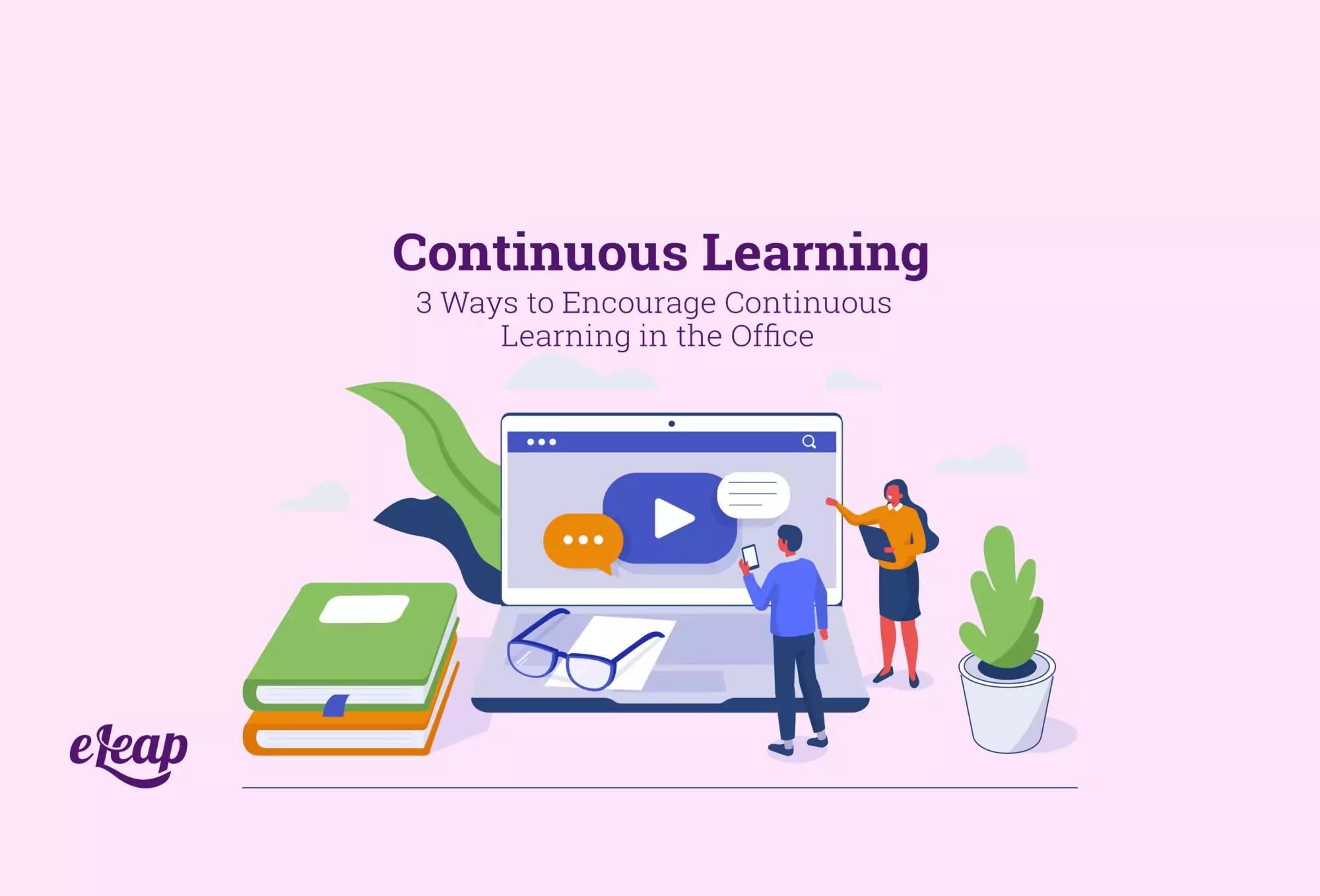Continuous Learning
3 Ways to Encourage Continuous Learning in the Office

Modern workplaces are always in a state of change. This is true for nearly any industry, and what it means for your employees is a necessity for continuous learning. Everyone on the team, from executives down, must be committed to keeping up with the pace of business.
Continuous learning is a training concept that focuses on consistently developing skills rather than only training employees in what they need to know. It is sometimes called “career development”, and in practice, it looks like helping your employees develop the long-term skills they’ll need to be successful in their futures.

What is Continuous Learning?
Continuous learning is a culture of allowing employees to learn while they work. It may mean having a training program within each role of your organization, or it may mean supporting employees in getting an online degree that advances their careers. This is especially important in industries such as technology, where progress is constantly being made.
Continuous learning can also focus on the soft skills that help advance careers, such as excellent communication or emotional intelligence. These skills help create thoughtful, successful managers and executive-level staff.
Why Support Continuous Learning?
The statistics show that continuous learning increases productivity decreases employee turnover, and helps brands maintain their reputation with their audiences. For example, a LinkedIn survey revealed that a whopping 94% of employees who chose to leave companies would have stayed if the company was invested in the employee’s career development.
Productivity increases when employees feel more secure and happy in their jobs as well. According to a Ceridian report, 83% of employees reported feeling more satisfied with their jobs when they are given continuous learning resources.
Investing in your team’s education and development shows that you care about their future. This alone can result in a more positive workplace culture, which is a massive benefit to everyone.
Other Benefits of Continuous Learning
There are other benefits of continuous learning for your organization beyond what it brings to your employees’ happiness and productivity. For example, it helps prepare your team to take on senior positions. As employees grow and improve, they’ll begin to move up the ranks and take on more responsibility. By encouraging this, you gain the benefit of a highly motivated and competent senior team.
It also improves retention, which can drastically reduce your costs. In such a competitive business world, it’s not as common for employees to stay with a single company for their entire careers. Hiring and training recruits costs time and money, so retention is an essential factor. By investing in your employees, you increase loyalty and decrease churn.
Finally, it improves your brand’s reputation. When your employees are motivated and productive, customer service and innovation are enhanced.
Tip #1: Develop a Plan for Continuous Learning
There are many ways to support continuous learning, such as:
- Formal education, such as an online college degree or trade school.
- Informal education, such as webinars, live training events, conferences, and other industry events.
- On-the-job training programs, which may include hiring outside trainers or developing a mentorship program within the organization.
- A combination of many types of learning opportunities.
Any of these may be an excellent option for your organization. It’s crucial to determine a plan for how you will support learning in your office.
To develop your plan, consider your goals for continuous learning. Do you want to help your employees stay on top of industry developments to grow their careers in this business specifically? Informal education combined with the opportunity for formal education may be a great plan.
Would you rather help your employees develop the soft skills needed to become great leaders and executive-level staff someday? A mentorship program may be the better option for you.
Tip #2: Help Employees Apply Their Knowledge
After your plan for continuous learning is approved, consider how you will allow employees to apply what they are learning. It is vital that new skills and techniques be put into practice to improve knowledge retention. Your team can be given new projects or new tasks based on what each employee has been learning. You can cross-train employees with other departments if their continuous learning has led them to train in those areas.
Another important part of helping your staff apply their new knowledge is recognizing when they are ready for promotions or raises based on their new skills. This helps motivate employees to continue their new training, which leads to more productivity.
Tip #3: Provide the Time and the Resources
Finally, if you want to truly encourage growth in the office with continuous learning, you must consider what time and other resources you can provide. If possible, training should be engaging in the workplace itself, where the employee needs it the most. Encouraging employees to attend events and workshops, or holding mentoring meetings during lunch hours, can be great ways to develop a learning culture.
Resources might also include tuition reimbursement, access to professional journals or other resources, or the use of professional-grade tools to do hands-on projects.
One important consideration is where your employees are getting information. When you can vet training programs, you ensure that your team gets the best information from reputable sources. The same is true for choosing the best tools or supplies, or the best mentors, for your program.
The Importance of Continuous Learning
The importance of a growing workplace cannot be exaggerated. The fast pace of industry in today’s world means that everyone must compete for the best, most knowledgeable teams of great employees. By investing in your employees with continuous learning opportunities, you have an advantage in this landscape.
Develop a plan for how you will support continuous learning for your team. Make sure you are giving them the projects that help them apply their knowledge. And offer them the resources and time they need to truly grow. These three tips will help you take advantage of one of the leading methods for retaining and supporting a dedicated team.